Korey Pereira
RTF 366S: Sound Design and Mixing
Fall 2024
Why PBL?
After film school, students will be expected to work on real projects as part of a team. What better way to train them for these real-world situations, than to have them work on a real film now as students? Project-based learning lets them do just that.
For me, integrating PBL into my course made it feel like the students had more skin in the game. By choosing what film they wanted to work on, they felt more invested in each unit and the final product they were each creating.
This project helped me appreciate all the little sounds. Big sounds are fun and cool, but the little sounds do the heavy lifting. If they aren’t there, nothing works.
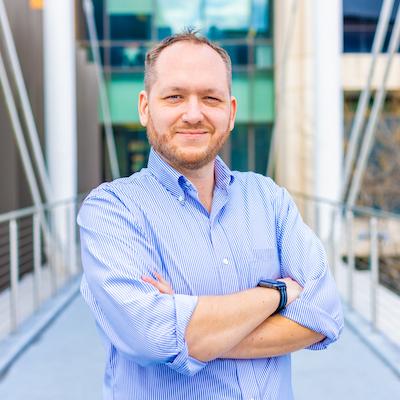
Korey Pereira, Area Head for Audio
Assistant Professor of Practice,
Radio-Television-Film
The Launch
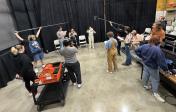
Problem Statement and Driving Questions
Problem Statement
There is often a split between classroom assignments and the situations you as students will encounter as a professional in sound design and mixing.
Driving Questions
•How can we actively seek out authentic sound design and mixing experiences to enhance our learning?
•How do we stay motivated and connected to the course material?
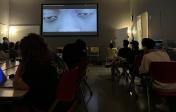
The Launch Activity
As an industry professional and Emmy winning sound design expert, Korey Pereira designed a launch event that immersed his students in the process of a mock meeting with the film director to establish sound design needs. In this way, the students role played acting sound design experts who would create audio segments for a film. Graduate students from prior courses taught by Mr. Pereira presented film projects for students in the current course to identify critical and creative ideas for sound design and mixing products.
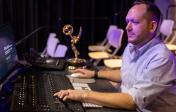
Need-to-Knows
1. Dialogue Clarity: Can we clearly hear the dialogue and does it sound like it all comes from the same space?
2. Sound Design: Does our sound design support the film’s narrative?
3. Final mix: Can we hear the dialogue, music and effects when they are important to the story?
I really enjoyed being a foley artist and being in the studio recording sounds. Although we had some technical difficulties we were able to troubleshoot them whether on our own or with the help of technical support. I also got better at setting up the computer for foley recording sessions and have been able to show other people tips that I’ve learned.
Active Learning
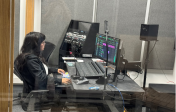
Sustained Inquiry
By working on an actual film, as we learn different techniques, students are able to apply them to a real project instead of just a series on disconnected lab materials or exercises. Students were actively encouraged to "fail forward" as they experimented with producing sound. Troubleshooting and problem-solving were a consistent part of the learning experience.
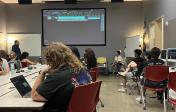
Feedback Loops
After our launch event, students chose which film they wanted to work on. We then established milestones so the students had clear deadlines for when they needed to complete the dialogue edit, sound design, foley recording and final mix for the project to stay on track. For each milestone, students received peer and instructor feedback
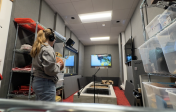
Student Choice and Voice
Students were able to screen four graduate films at the beginning of the semester and choose which film they identified with or were excited to work on. As they created the soundtrack for the films, they could also impart their own creativity. This resulted in students who worked on the same films, but had very different soundtracks at the end of the semester.
The Learning Product
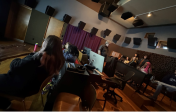
Learning Product
The goal of RTF 366S is to learn the processes and techniques involved in creating and mixing the soundtrack for a film. As a final project, each student completed their own unique soundtrack to accompany their chosen film. As we learned about dialogue editing, they were able to apply the techniques to their film. Each unit worked cumulatively towards their final mixes where they brought all their work together into a finished soundtrack.
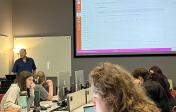
Critique and Revision
By having milestones for each category of sound creation and mixing, students were able to improve and adapt their work to make sure it would still work once brought all together in their final mix.
For each milestone of the course content (dialogue editing, sound design, Foley lab, mixing), students received feedback from their instructor and peers to consider as they finalized their products.
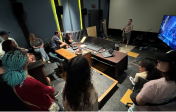
Learning Product Rubric
Students were assessed based on the requirements of each unit. When editing dialogue, the expectation is that they create smooth transitions between gaps, fill empty holes with room tone and that all dialogue matches sync with the actors on screen. For their final mix, they were assed on how they different elements blended to make sure each scene (and the film as a whole) sounded cohesive.
I had a ton of fun editing this project and learning Pro Tools! I am very happy to have picked an engaging short film that is meant to be entertaining.
Final Presentations
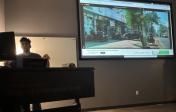
Final Presentations
Each student created a final soundtrack for a real film. This presented them with real world challenges that come with working on a project outside of the petri dish of the classroom. Each student was presented with unique challenges and as a class, worked together with each other, the undergraduate learning assistant and myself to work through their challenges.
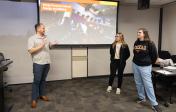
Final Reflections
Throughout the process, students were expected to reflect on the various techniques as we covered them. By making reflection a regular component of the learning process, when it came time for the final mix and reflection, they were quite familiar with the process.

